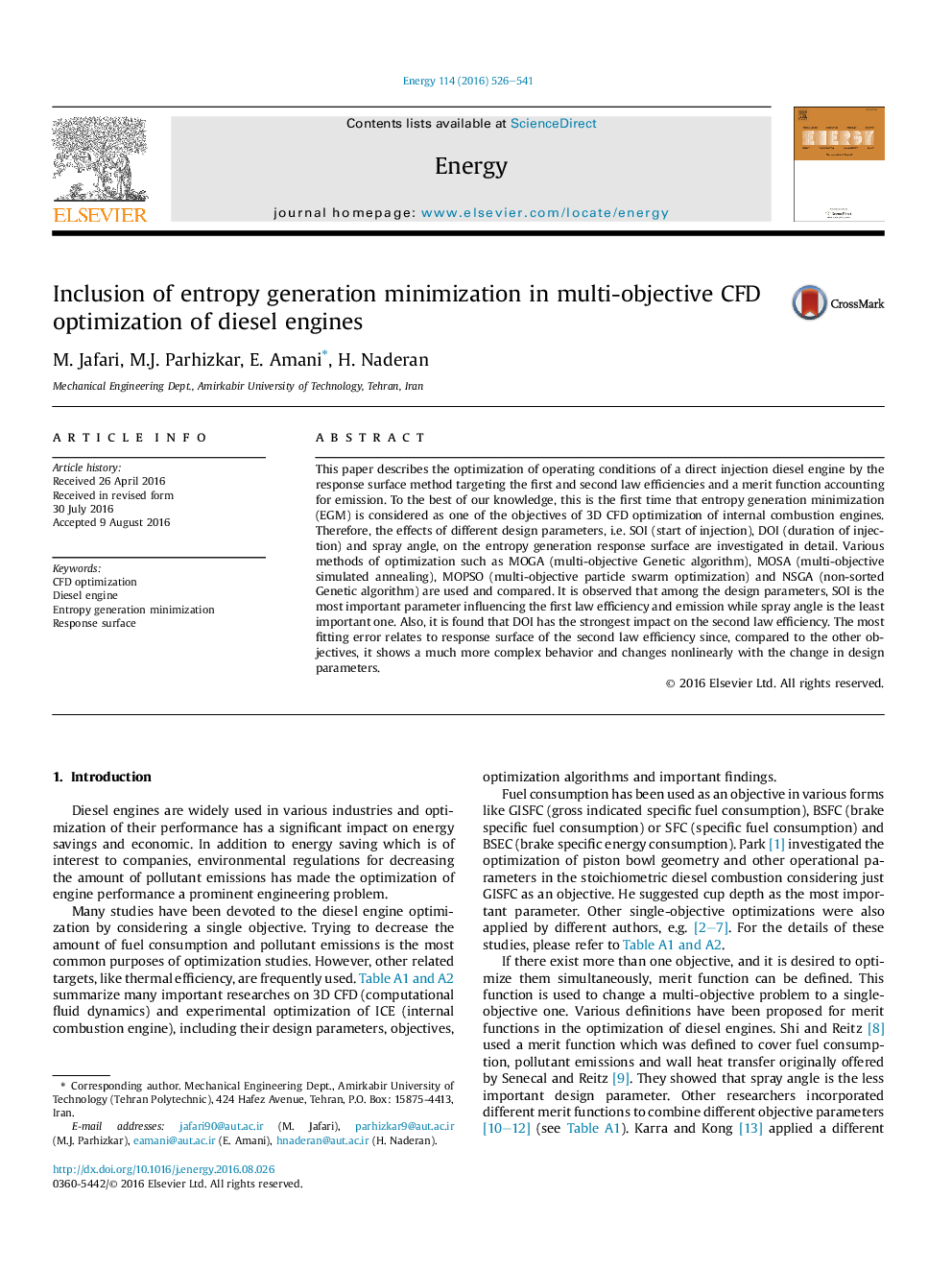| Article ID | Journal | Published Year | Pages | File Type |
|---|---|---|---|---|
| 8072865 | Energy | 2016 | 16 Pages |
Abstract
This paper describes the optimization of operating conditions of a direct injection diesel engine by the response surface method targeting the first and second law efficiencies and a merit function accounting for emission. To the best of our knowledge, this is the first time that entropy generation minimization (EGM) is considered as one of the objectives of 3D CFD optimization of internal combustion engines. Therefore, the effects of different design parameters, i.e. SOI (start of injection), DOI (duration of injection) and spray angle, on the entropy generation response surface are investigated in detail. Various methods of optimization such as MOGA (multi-objective Genetic algorithm), MOSA (multi-objective simulated annealing), MOPSO (multi-objective particle swarm optimization) and NSGA (non-sorted Genetic algorithm) are used and compared. It is observed that among the design parameters, SOI is the most important parameter influencing the first law efficiency and emission while spray angle is the least important one. Also, it is found that DOI has the strongest impact on the second law efficiency. The most fitting error relates to response surface of the second law efficiency since, compared to the other objectives, it shows a much more complex behavior and changes nonlinearly with the change in design parameters.
Related Topics
Physical Sciences and Engineering
Energy
Energy (General)
Authors
M. Jafari, M.J. Parhizkar, E. Amani, H. Naderan,
